Welcome to the Top of the World
BARROW, ALASKA– It is late April and I have finally made it to Barrow, Alaska. A place as intriguing as it is far north of everywhere else. This is the fourth consecutive year that I have come to this part of the North Slope Arctic to work with scientists on the BEO (Barrow Environmental Observatory)Hydrology Manipulation Project. It is a government funded research project focusing on the manipulation of a large wetland by sectioning off into three distinct areas of tundra and pumping water between them to simulate various Arctic conditions.

The Barrow Biocomplexity Environmental Observatory Hydrology Project in late summer and located near where the edge of where the Chuckchi and Beaufort Seas meet.
As I looked out the window of the Alaska Airlines plane minutes before landing, I couldn’t believe the amount of snow on the ground. It seemed that someone had forgotten to tell Barrow that winter is over. There was snow everywhere, and lots of it. From the look on the faces of most of the people getting off the plane with me, others must have been thinking the same thing. Outside in Barrow the ambient air temperature was 12°F so I thought that surely not much could be going on around town. Forget the coke machine– where can I get a hot chocolate and a fireplace?
Coping with Cold
Man it was cold. Or so it seemed to me…but apparently not to anyone else that lives here. On the ride through this Iñupiaq Eskimo village to my final destination– a research facility just outside of Barrow that was once a naval base– it was apparent that to the Iñupiaq, the native people of the Alaskan Arctic, cold days are as common as droughts are in the Western United States.
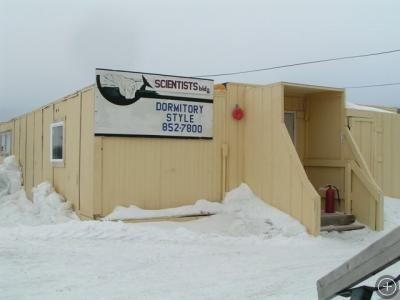
The NARL (Naval Arctic Research Laboratory) sleeping accommodations set up for scientists and support personnel.
As we passed a school playground, kids wearing parkas screamed at the top of their lungs and shrieked with laughter while jetting down a slide. The cold temperature seemed to make little difference to them. Their enthusiasm and energy captivated me until I noticed some movement nearby. We stopped to get out and take a look. It was a large pen with a dozen or so white dogs. It turned out to be the home of a dog sled team. As I watched them watch me, it dawned on me that the dogs and the kids were oblivious to each other. Now I ask you: When was the last time you saw kids and a pack of dogs not going crazy trying to get each other’s attention?

A dog sled team relaxes in their compound while ignoring the kids playing in the playground behind them.
One thing one quickly notices soon after arriving in Barrow is that people there wear parkas like people in cities carry cell phones. Even during the summer or when they are inside, people wear them. (That should give you an idea of just how warm Barrow gets.) The weather can be deceiving. The sun may be out 24 hours a day, seven days a week and it may seem warm outside, but if you stay out long enough, sooner or later the cold starts moving in. Mr. Cold meet Mr. Shiver.
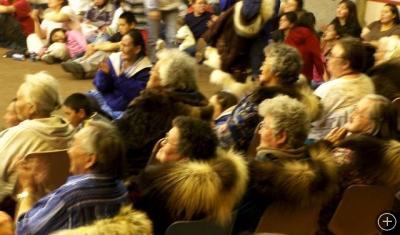
Iñupiaq elders enjoy watching traditional dancing during the Nanulateq festival that celebrates successful whale hunts.
An interesting thing about all these parkas is that a good majority of them are just plain white. They have no other markings on them. No patches. No slogans. No pictures. The fur ruff on the hood that keeps snow away from the face and from getting inside the sleeves is usually dark, but otherwise the parkas are just white. You wonder why no one wears those popular bright parkas made with a variety of colors that one sees on ski slopes? It all makes sense after you find out why. (I will explain later.)
Snowies
The factors distinguishing Barrow from other places are not limited to just clothing or people, though– they continue to other topics. Even Barrow’s traditional name of Ukpeagvik stands apart from the others. It translates from Iñupiaq into “Place where snowy owls are hunted.”
That was then. Now they are protected with conservation measures practiced and enforced to ensure their survival. Snowy owls are beautiful, majestic predator birds that construct nests in the late May and early June. The males are typically all white, with the females and younger ones having darker feathers. Once you get away from bustling Barrow, it is not uncommon to see up to a half dozen Snowy nests scattered amongst the tundra at one time.
Houses and Settling
Look around and you will see even more things differentiating Barrow from other places. How residents build their homes is yet another illustration. For thousands of years the Inuit were able to cope with living in the Arctic by making mounds into the ground. This provided insulation that protected them from the brutal wind-chills and extreme cold temperatures. Although they now live in typical modern-style homes, they still have to face some of the same challenges that their ancestors did.
Now the Iñupiaq build their homes on wooden pilings just like you would see on beach homes along the coastlines of the United Sates. But unlike those, which are designed to withstand rising sea waters and storm surges, the ones on the North Slope are built that way because of the type of ground they have to deal with. In the Arctic, the ground cover that thaws and re-freezes with the seasons is called the active layer. In Barrow the depth of this layer averages about 30 centimeters. After that is the permafrost which is ground that stays frozen for at least two straight years. The permafrost in Barrow is over 900 feet thick. The holes for setting the pilings have to be augured deep enough so that they do not heave as they settle into the ground and the active layer thaws. For this reason most pilings are set between 5 and 10 feet. The pilings are left alone for a year or two, and then are cut so that they are all on the same level. A house is then built or placed on them.
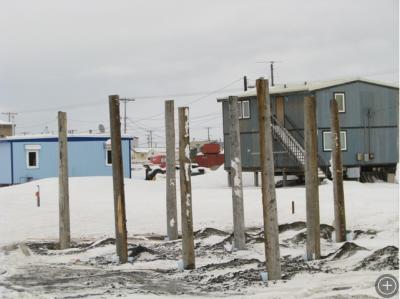
Wooden pilings are set into the ground for a couple of years to allow them to settle into the tundra.
Life at the ‘Office’
Going to work in the morning in Barrow is just another example of how different it is from other places of the United States. For me it’s assisting the scientists on the research project that I am involved in. During the cold months, that means having to put on layer after layer of cold weather clothing. You have so many clothes on that if you fall over while tying your shoes you may not ever get up.
The daily ritual for getting ready continues with getting a snow machine to drive to the research site. Then warming it up so it doesn’t conk out while you are driving in the middle of nowhere. Then checking the oil, the fuel, the body, and listening to the sound of the engine. Two thumbs up and now you’re ready to take a shotgun or a ‘bear guard’ guide with you.
Either one come in handy when encountering a dangerous animal at the wrong time and place. In the winter and the spring it seems to be the polar bear that everyone watches out for. In the summer the occasional grizzly bear visits the area. In between are the rabid foxes.
The normal work day doesn’t end there. Whiteouts and blizzards occur as frequently as bad hair days. Hypothermia lurks nearby if you’re not careful. When the day is over, the night begins. In the winter the day never starts because it is night most of the time and dusk when it isn’t. In the summer it is so bright that you can burn your eyes by not wearing sunglasses at midnight.
The Top of the World
Barrow truly is a remarkable place. No one is there by accident. Everyone who is not from there goes there for a reason. You don’t just pass through, run out of gas and find yourself stuck. It is far from anywhere else and as high north as you can go on land in the United States before hitting water. Like a lot of remote Alaska, there are no roads that connect it to anywhere else. Travel is year-round and only by plane although in the summer when the frozen sea has broken up and gone out to the open ocean, a barge brings supplies to the town. Schools have no temperature cut-off so they rarely close because of cold weather.
For a town with no movie theatres, no bowling alleys, no fast food chains, no mall, and no parks, people in Barrow definitely don’t let the weather and lack of so-called ‘quality of life services’ keep them from going outside and doing something. Even the dogs seem to relish the cold temperatures. Everything seems to point to one thing: Welcome to Barrow.



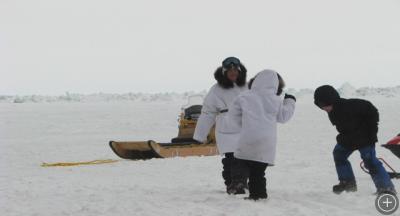
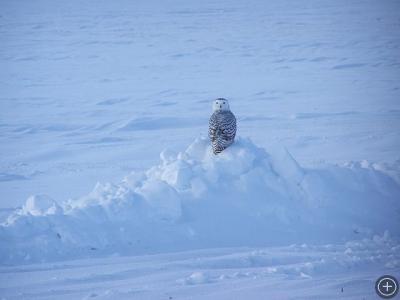

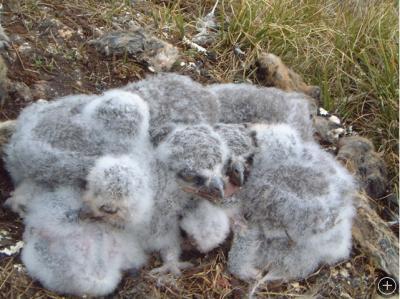
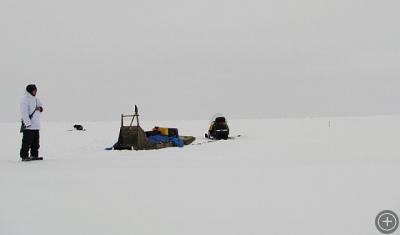

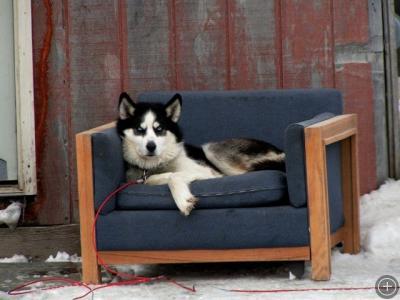

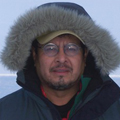







Hi Chico –
I do enjoy reading your stories! So when are you going to tell us why the local Barrow residents only wear white parkas? I have a guess, but I’d like to know the actual answer! Staying tuned.
LS-A
Hi Chico,
I thoroughly enjoyed reading your Barrow story. I am a former TEA teacher and have visited Barrow several times with research groups, and I try to keep up with all of the projects/research going on up there. Your pictures and description of the town and the people evoke wonderful memories for me. School is out for the summer now, but I am already planning on how to incorporate your blogs into my AP Environmental Science class for next year. I hope to get back to Barrow one day soon — I truly enjoyed every moment, and every project.
I am curious about the white parkas — I believe that I know the reason, but I anxiously await your explanation.
Dora Nelson
Asheville, North Carolina
Chico! Your stories are great! What a wonderful place!
Hi Chico
Right on Chico.Keep up the good work.Having had the experience to work with you at the Barrow environmental observatory,it has been a blessing.Further understanding the science of the polar regions and the impact of an ever changing world keep it up. Good job.
Hi Chico, how do you do?? What wonderful stories that you share with your readers. Congratulations for having such a marvelous opportunity to study the Arctic.
Two months ago, I had the chance toboard the Amundsen ice breaker. I spent three weeks on the ocean Arctic and only had the opportunity to visit Ulukhaktok, a Inuit community. It was something special, a one in a lifetime experience.
Thanks for sharing with us the beauty of the Arctic, and please keep posting.
Lucy Calderon from Guatemala, Central America
Hi Richard,
It is good to read the exciting stuff about life in BARROW and more exciting to see the snaps of your trip. I have never been to such cold place. The only cold place I went is to SHIMLA, which is north of India.
I am a philatelist from India with a passion for Polar Regions and its related postal items.
I am looking to have some piece of your adventure by receiving postally cancelled covers with special cancellations from your expeditions.
I can send you mint covers affixed with stamps that you can cancel and send them back to me. I will also send a return envelope with packing with my address and stamps affixed. Just let me know the value.
I request if you can help me to share your adventure this way.
Regards,
Ajay Sirpal
Mumbai India.
Hi Chico,
I’m an illustrator in New Zealand working on a story about insulation for kids 8-9 yrs old. It’s due to the publishers by March 3rd and I’m doing a bit of research before I begin to draw. I need to find out how many layers of fur a husky has to keep him warm from the skin to the outside air – (I’m doing cut-away diagrams of stuff). Can you tell me please?
Cheers and thanks
Adele
Wellington
New Zealand